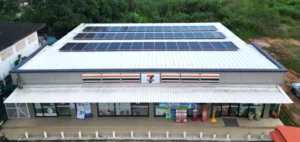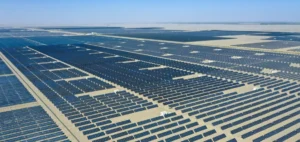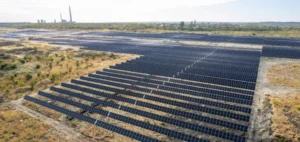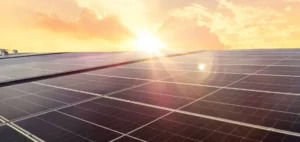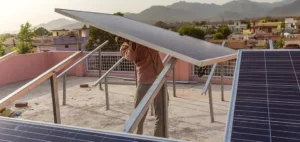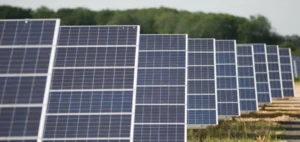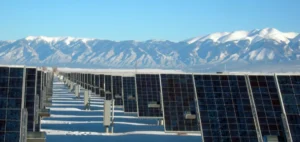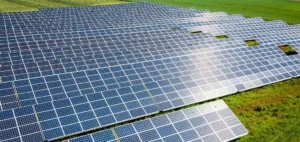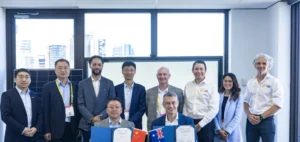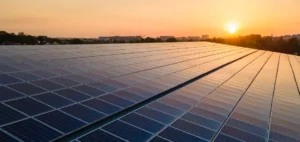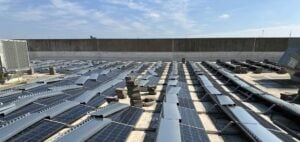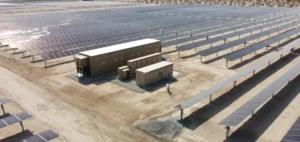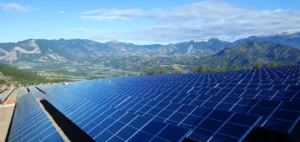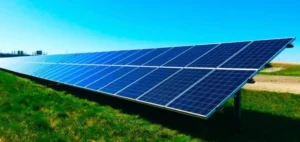The next-generation solar cells market is undergoing rapid growth, driven by major technological advancements in materials like perovskite, organic photovoltaic (OPV) cells, and quantum dot cells. According to DataM Intelligence, the market size, which was valued at USD 4.21 billion in 2024, is expected to reach USD 19.62 billion by 2032, reflecting a compound annual growth rate (CAGR) of 21.21%.
Next-generation solar cells stand out due to their high efficiencies and flexibility. Perovskite cells, for example, have reached conversion efficiencies of over 26% in laboratory settings, with commercial prototypes achieving an average efficiency of 22%, surpassing traditional multicrystalline silicon cells. This technological progress allows for more competitive and versatile solutions, applicable to residential and industrial sectors, with particular interest in lightweight and flexible applications integrated into buildings.
Public support and advances in materials
The strong demand for more efficient solar solutions is fueled by the rise of next-generation materials. In 2024, over 5% of new solar installations used these advanced technologies. The previous year, global investments in next-generation solar cell R&D exceeded USD 4.5 billion, with more than 30 pilot-scale production lines operating worldwide.
Government policies are also a key driver of this growth. In the United States, the Inflation Reduction Act (IRA) allocated USD 370 billion to support renewable energy adoption, with at least USD 1.2 billion dedicated to innovation in next-gen solar technologies. In Japan, the government has launched the Green Innovation Fund to support perovskite cell production, with investments set to reach USD 2 billion. These initiatives strengthen global efforts to accelerate the energy transition by incorporating the latest innovations into solar infrastructure.
Market segmentation by solutions and materials
The next-generation solar cells market is divided into three main segments: on-grid systems, off-grid systems, and hybrid systems. On-grid systems currently dominate the market, accounting for 62% of the market share (USD 2.6 billion in 2024), and will continue to grow as more homes and businesses adopt rooftop solar installations. Hybrid systems, which combine solar power with storage technologies, are also experiencing significant demand and are projected to exceed USD 3 billion by 2032.
Materials that dominate this market include perovskite solar cells, which hold 30% of the market share, or USD 1.25 billion in 2024. They continue to grow at a rate of 25% annually, driven by their low production costs and their ability to be integrated with silicon-based systems to optimize efficiency. Other technologies such as CIGS (copper-indium-gallium-selenide) and cadmium telluride (CdTe) also play a key role in expanding the market, particularly for lightweight and flexible solar applications.
Residential and commercial applications driving growth
Residential installations make up the largest share of the market, with 40% in 2024, supported by home energy independence programs and rooftop solar initiatives. Commercial applications represent 35% of the market (USD 1.47 billion), as businesses and SMEs invest heavily in net-zero infrastructure. Industrial applications, though smaller in share (25%), are expected to grow rapidly at a rate of 23% annually, particularly due to rooftop solar installations in warehouses and factories.
Growth in the U.S. and Japan
The U.S. market for next-generation solar cells accounted for 36% of the global market, with USD 1.5 billion in sales in 2024. This market is driven by federal initiatives, including the IRA, which allocates significant resources to solar innovation. Japan, on the other hand, is experiencing rapid growth, with projections indicating a 21.8% annual increase, reaching USD 1.95 billion by 2032. The country is also focusing on technologies like building-integrated photovoltaics, which are gaining traction in both residential and commercial sectors.



